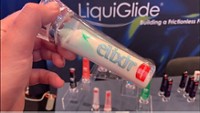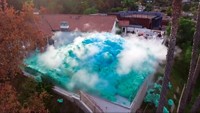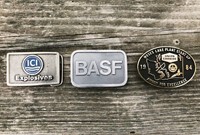Advertisement
Grab your lab coat. Let's get started
Welcome!
Welcome!
Create an account below to get 6 C&EN articles per month, receive newsletters and more - all free.
It seems this is your first time logging in online. Please enter the following information to continue.
As an ACS member you automatically get access to this site. All we need is few more details to create your reading experience.
Not you? Sign in with a different account.
Not you? Sign in with a different account.
ERROR 1
ERROR 1
ERROR 2
ERROR 2
ERROR 2
ERROR 2
ERROR 2
Password and Confirm password must match.
If you have an ACS member number, please enter it here so we can link this account to your membership. (optional)
ERROR 2
ACS values your privacy. By submitting your information, you are gaining access to C&EN and subscribing to our weekly newsletter. We use the information you provide to make your reading experience better, and we will never sell your data to third party members.
Business
Newscripts
Chemistry spotted on more belt buckles and model trains, and fashion-forward work boots
by Alexander H. Tullo
April 5, 2020
| A version of this story appeared in
Volume 98, Issue 13
Belt buckles, the sequel

Back in January, the Newscripts gang wrote about its burgeoning chemical belt-buckle collection. These are belt buckles that chemical companies made to promote their businesses or to commemorate events such as plant openings. Many can be found on eBay.
As it turns out, many can also be found in the closets of Newscripts readers. A few of you responded with pictures of your cherished buckles and the stories that go along with them.
Retired US Army colonel Don Dustin sent us an image of his US Army Chemical Corps buckle. He acquired it in 1978 and still wears it to regimental association gatherings. The Chemical Corps’s mission is to defend against chemical, biological, radiological, and nuclear weapons. Its insignia, used since World War I, features a benzene ring and crossed retorts.
Bob Kaley sent us a photo of the Monsanto belt buckle he was awarded for a decade of service to the company. It is studded with a single diamond under the Monsanto logo.
Another reader, who asked not to be named, gave us a belt buckle to add to our collection. The buckle was from FMC’s Peroxygen Chemicals Division.
Back in the early 1990s, FMC was working with denim producers such as Levi’s, Lee, and Wrangler on ways to improve the potassium permanganate stone-washing process. An acidic solution of FMC’s hydrogen peroxide and peracetic acid was used to reduce the KMnO4 residuals to a soluble form, and its hydrogen peroxide in a basic solution was employed in a final bleaching step. This belt buckle, connected to dungaree history, is now the centerpiece of the Newscripts collection.
Chemical railcars in miniature

Many model train cars, we recently learned, are chemical company themed.
Timothy Rydel, a protein crystallographer for Bayer Crop Science, wrote in to show us his collection of O-gauge model train replicas of chemical tanker and hopper cars. Rydel has been cultivating his model train hobby since graduate school. Over the past 30 years, his collection has swelled to several hundred cars.
Model train companies, like Lionel, make replicas of real-life railcars that they find attractive enough to reproduce. Rydel keeps an eye out for “anything related to chemistry, chemicals, polymers, or agriculture.”
His collection includes a lot of chemical companies that haven’t been around for decades, like Stauffer Chemical and Hooker Chemical. Imperial Chemical Industries bought Stauffer in the 1980s. Occidental Chemical acquired Hooker—infamous for the Love Canal disaster—in the late 1960s.
A few of the other businesses represented on the cars also changed hands. Goodyear Tire & Rubber’s polyester business was sold to Shell in the 1990s. IMC Global, a fertilizer company, is now a part of Mosaic. Linde Air Products was actually Union Carbide’s industrial gas business and separate from Germany’s Linde. US Linde became Praxair, which merged to become part of Germany’s Linde and now bears the name again.
Rydel notes that chemical companies, increasingly discreet, don’t paint their logos on railcars as much as they used to, and hence fewer chemical model trains are made. That strikes the Newscripts gang as too bad.
Fashionable boots

Coming to a plant, construction site, or laboratory near you: more-fashionable safety shoes.
Anastasia Kraft founded Xena Workwear when she noticed an unmet need. Safety boots, like steel-toed boots, looked, in the company’s words, “clunky” and “unprofessional.” Xena’s steel-toed shoes are stylish and don’t look like work boots at all.
Xena may have a hit on its hands. “I wear these boots every day as I am constantly going back and forth from the shop floor to my office,” one testimonial proclaims on Xena’s website.
Alex Tullo wrote this week’s column. Please send comments and suggestions to newscripts@acs.org.





Join the conversation
Contact the reporter
Submit a Letter to the Editor for publication
Engage with us on Twitter